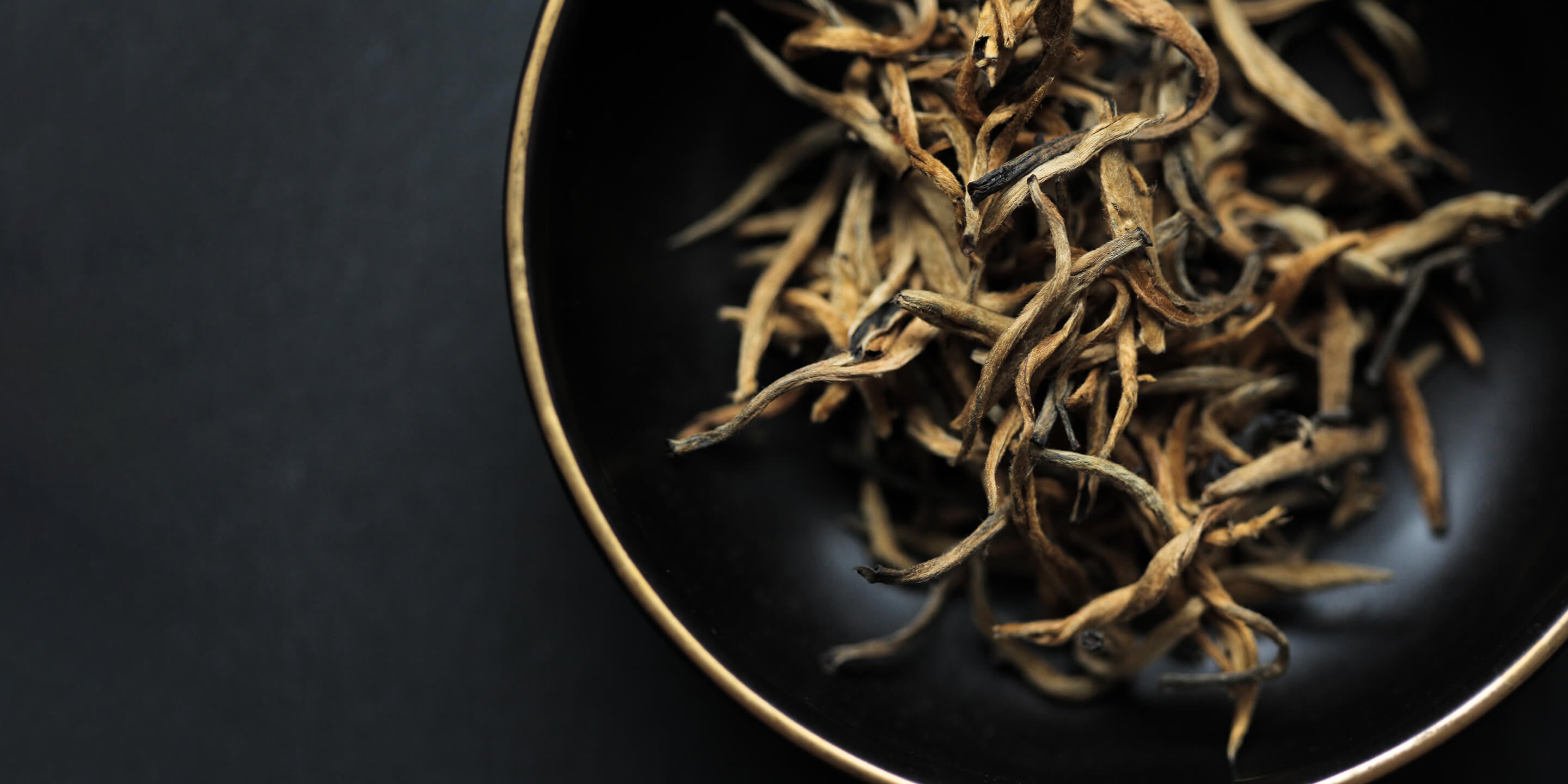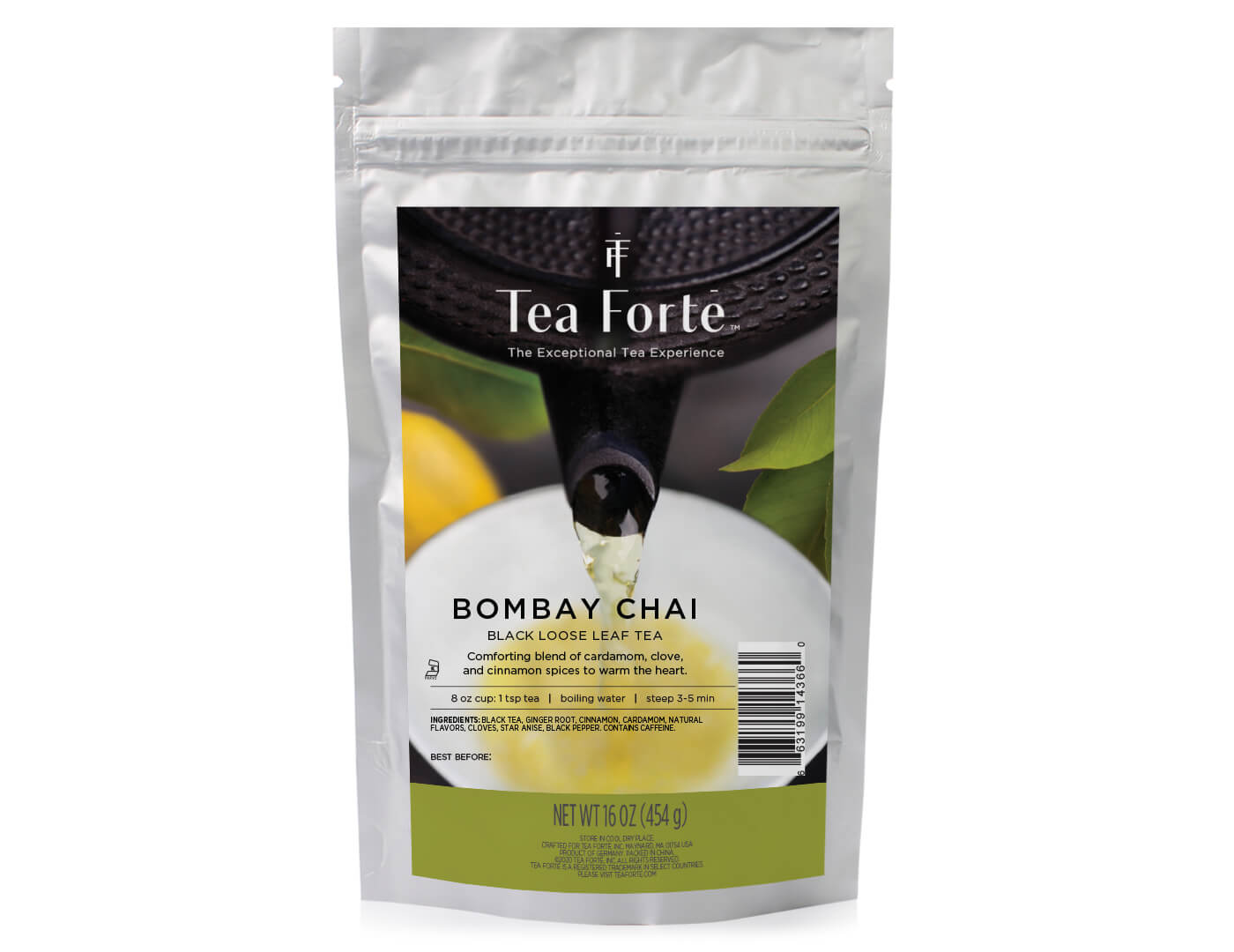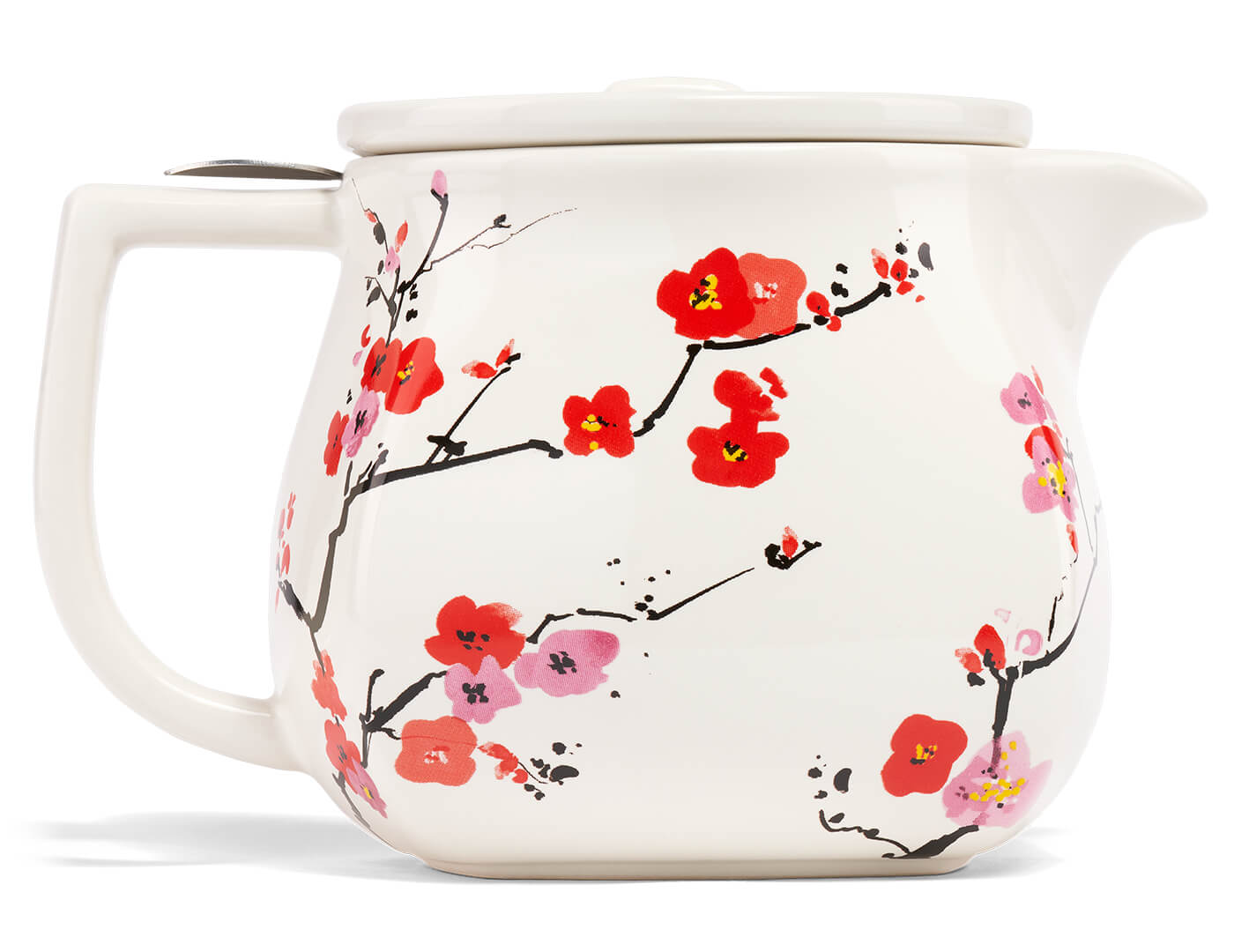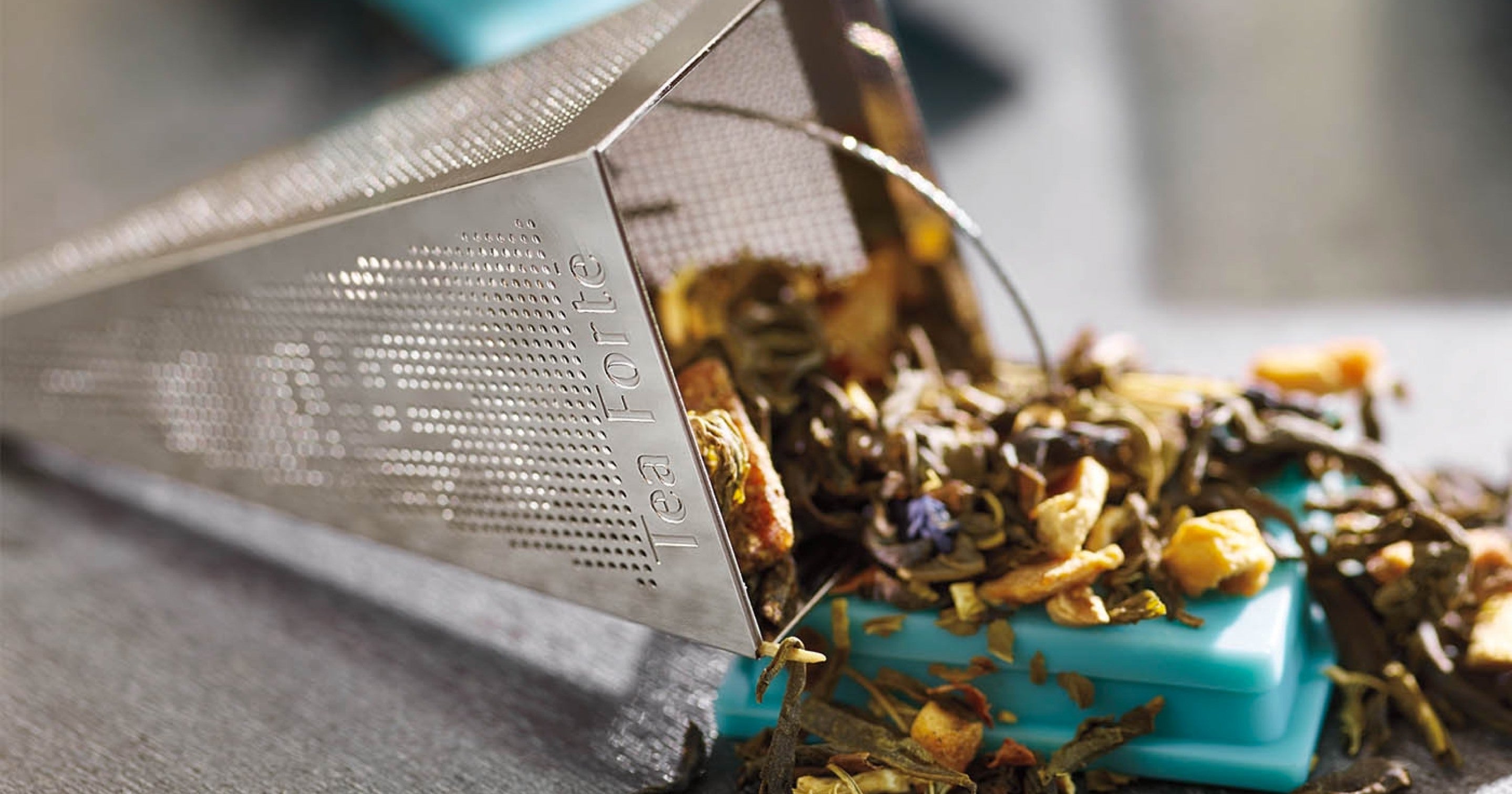For tea enthusiasts who wish to wander beyond the paper teabag, the world of loose tea is filled with sensorial delights. From rich black and oolong tea blends to delicate green and white teas and herbal tisanes, loose-leaf tea is both delicious to drink and beautiful to look at. Read on for the ultimate guide to loose tea in all its many forms.
What is loose tea?
Also called “loose leaf tea,” loose tea is exactly what it sounds like: any amount of tea that isn’t confined to a single-serving bag or infuser. In much the same way you might bring home a selection of bulk spices, grains, or baking ingredients from your local grocer or market, loose leaf teas are to be measured by hand before steeping.
Tea lovers often prefer loose leaf tea because it offers a multi-sensory experience: its fragrance is more apparent, and its form is often beautiful, incorporating dried flower petals, spices, roots and leaves in a host of color palettes and textures. To prepare it, loose tea is placed in a metal or silicone infuser and steeped in hot water for an appropriate amount of time. The infuser is removed from the hot water once the steep is complete.
The best loose tea for beginners
There are many ways to introduce oneself to the experience of enjoying loose tea; while different varieties of tea require slightly different water temperatures and steeping times, all loose teas require the same simple set of tools for preparation, and the art of finding the best loose leaf tea is a subjective one, up to each individual’s tastes and preferences.
Generally speaking, even if you’re used to preparing your favorite tea blend using tea bags, you’re likely to enjoy it just as much in its loose-leaf format. Whether you’re drawn to fruit-forward herbal tisanes, rich and earthy chai blends, or any other flavor profile, you may appreciate them as much (if not more) when they’re prepared from loose leaves. So, the wisest way to decide which loose leaf blend to invest in first is quite simple: just begin with whatever flavors you already love.

For the undecided, Tea Forté offers an array of Single Steeps Samplers that eliminate the need to measure the leaves before each steep; rather, small packets of single servings are available in a medley of flavors, curated into collections that go perfectly together. Those who appreciate the health benefits and earthy aroma of green tea may find a perfect loose tea blend in the Essential Greens single-steep collection. Tisane enthusiasts are likely to enjoy the caffeine-free infusions of Herbal Retreat, while adventurous souls in search of rare things will enjoy the blends in our Lotus Collection. Once you’ve discovered a favorite or two, you can comfortably invest in a larger tin of the winning blend(s).
Our Single Steeps® Samplers are individual, pre-measured loose tea pouches designed to make steeping loose tea easy. Looking for more variety? Try our Single Steeps Tea Chests of 28 loose tea pouches, available in Classic Collection of assorted tea types, or our caffeine-free Herbal Collection.
HOW TO STEEP LOOSE TEA
Steeping loose tea requires either a tea press (i.e., a French coffee press) or a reusable tea infuser made of metal or silicone. Our Fiore Teapots, Fiore Steeping Cups, and KATI® Steeping Cups, as well as our ICON metal infusers, are the perfect companions to steeping loose leaf tea. In a pinch, a kitchen pot and fine-mesh strainer may be used instead.
To properly steep loose tea, it all comes down to timing and temperature. Depending on whether you’re making black, oolong, green, white, or herbal tea (the last of which is technically called a “tisane”), you’ll need to heat your water and time your steep accordingly. Because each type of tea is harvested, dried, rolled, oxidized, and prepared for consumption differently than its counterparts, slight differences in steeping bring out the true flavor of the blend. Steeping the tea for the correct amount of time at the appropriate temperature will enhance the flavor and save you from a cup that’s too weak, strong, flat, or bitter.

STEEPING BLACK LOOSE TEA
- For loose black tea, heat water to 208 degrees Fahrenheit.
- Place one teaspoon of loose tea in the infuser basket and leave it to steep for 3-5 minutes.
- Remove infuser basket and enjoy!
Milk and/or sugar may be added to black tea, although the addition of milk lessens black tea’s antioxidant potential. For those who enjoy milk tea, however, milk is ideally added to a pre-warmed cup first, followed by the tea itself. Lemon is another wonderful accoutrement, but it must never be used along with milk, as citrus and dairy in the same cup will curdle and spoil the experience.

STEEPING OOLONG LOOSE TEA
- For loose oolong tea, heat water to 175 -195 degrees Fahrenheit, depending on the blend.*
- Place one teaspoon of loose tea in the infuser basket and leave it to steep for 2-5 minutes*.
- Remove infuser basket and enjoy!
* Oolong teas are can be bold, delicate, or somewhere in between, but they are always unique and varied. Because of these variations, be sure to check the packaging for steeping details of your favorite oolong, as they can vary from blend to blend in both steep temperatures and timing. As far as accompaniments go, oolong tea is best enjoyed on its own, without any milk, lemon, or sweetener.

STEEPING GREEN OR WHITE LOOSE TEA
- For loose green tea and loose white tea, heat the water to 175 degrees Fahrenheit.
- Place one teaspoon of tea in the infuser basket and leave it to steep for 2-3 to taste; left longer than that, bitterness may emerge.
- Remove infuser basket and enjoy!
Add sugar or honey to taste, if desired, but leave the milk or lemon for black tea, as it doesn’t pair well with green or white tea blends.

STEEPING HERBAL LOOSE TEA
- For a loose herbal tisane, heat the water to 208 degrees Fahrenheit.
- Place one serving of tea in the infuser basket and leave it to steep for 5 minutes or longer.
- Remove infuser basket and enjoy!
Add sugar or honey for sweetness if desired, but reserve milk or lemon for black tea, as it can mask or ruin the delicate flavors of herbal tea blends.
How long does loose tea last?
Loose tea’s shelf life is impressively long, which makes sense given its origin. Loose leaf teas far predate tea bags and single-serving infusers, harking all the way back to ancient China and India. There, tea farmers tightly packed loose leaf tea into bricks or cakes for transport from the estates where they were grown and processed to faraway lands. Ultimately, the packed tea was stored in cool, dry places and delicately chipped away at, serving by serving, until fully consumed.
Today, Tea Forté continues the tradition of offering high-quality blends hand-selected from the finest producers, but our loose tea is carefully packaged in luxury containers for safe long-term storage, maintaining freshness and full flavor for two or three years (each of our boxes, tins, and bags are marked with a "Best Before" date).
Our exceptional tea experience begins with handcrafted, uncommon, limited-availability teas, cultivated in just the right place at just the right time. We travel thousands of miles to procure fine whole leaves, resulting in loose leaf offerings that are distinctive, memorable and always worthy of a second cupful.
To explore Tea Forté’s collection of loose tea, consider our Single Steeps Samplers to try an array of flavor profiles, or head straight for your favorite blend in a signature Loose Leaf Tea Canister
.

Our Loose Leaf Tea Canisters are packed by weight and contain 35-50 servings each.
Earl Grey Loose Leaf Tea Canister
Save 25% at checkout

Bombay Chai Loose Leaf Tea Canister
Save 25% at checkout















